
Palaces, Culture & Capitals: Munich to Budapest Epic
 11 Day Tour of Munich, Prague, Vienna and Budapest
11 Day Tour of Munich, Prague, Vienna and Budapest
Overview
Trip Map
Itinerary
Inclusions
Reviews







11 Days 10 Nights
Best Time: Jan-Dec
Cultural Exploration
Castle & Palace Tours
Explore grand palaces steeped in history and wander through the enchanting streets of Munich, Vienna, Budapest, and Prague. This meticulously planned 11-day journey showcases Central Europe's most captivating cultural and architectural treasures. Experience the best of each city on private walking tours, including Munich's historic heart, Prague's majestic castle complex, Vienna's imperial grandeur, and Budapest's breathtaking Danube vistas. With comprehensive travel guidance available through a convenient mobile app, enjoy a stress-free and authentic voyage.
- Wander Munich's cobbled lanes, marveling at the neo-Gothic splendor of the New Town Hall.
- Cross the Charles Bridge, explore the Little Quarter, & experience the grandeur of Prague Castle.
- Be captivated by Vienna's majestic Schönbrunn Palace and delve into the city's imperial history.
- Relax at Budapest's Széchenyi Baths, tour its ornate Parliament, and shop in its Central Market.
- Enjoy evening river cruises beneath the city lights in Prague & Budapest, taking in stunning views.
Explore grand palaces steeped in history and wander through the enchanting streets of Munich, Vienna, Budapest, and Prague. This meticulously planned 11-day journey showcases Central Europe's most captivating cultural and architectural treasures. Experience the best of each city on private walking tours, including Munich's historic heart, Prague's majestic castle complex, Vienna's imperial grandeur, and Budapest's breathtaking Danube vistas. With comprehensive travel guidance available through a convenient mobile app, enjoy a stress-free and authentic voyage.
- Wander Munich's cobbled lanes, marveling at the neo-Gothic splendor of the New Town Hall.
- Cross the Charles Bridge, explore the Little Quarter, & experience the grandeur of Prague Castle.
- Be captivated by Vienna's majestic Schönbrunn Palace and delve into the city's imperial history.
- Relax at Budapest's Széchenyi Baths, tour its ornate Parliament, and shop in its Central Market.
- Enjoy evening river cruises beneath the city lights in Prague & Budapest, taking in stunning views.

Old Town
Architecture

Residence Palace
Castles & Chateaux

Prague Castle
Castles & Chateaux

Charles Bridge
Historic Landmarks

Hofburg Palace
Castles & Chateaux

Schönbrunn Palace & Zoo
Parks & Gardens

National Museum
Museums & Galleries

Central Market
Street Markets

Castle Hill
Castles & Chateaux
Must see sights

Old Town
Architecture

Residence Palace
Castles & Chateaux

Prague Castle
Castles & Chateaux

Charles Bridge
Historic Landmarks

Hofburg Palace
Castles & Chateaux

Schönbrunn Palace & Zoo
Parks & Gardens

National Museum
Museums & Galleries

Central Market
Street Markets

Castle Hill
Castles & Chateaux
Starting from
$2098
per person
 Not included
Not included Secure Your Customizable Trip
Enter your details to embark on a journey that can be tailored just for you.
Start
Travelers
Add Room
Remove Room
Preferred Hotel Stars
Craft Your Own Itinerary
Select your interests and destinations for a trip plan inspired by you.
Trip Map & Itinerary
Enable/Disable Map Scrolling
Click To Make Map Interactive

Trip Timeline
 Edit Details
Edit DetailsArrival
2 nights
Munich
Germany
Train: 6h
3 nights
Prague
Czech Republic
Train: 4.5h
2 nights
Vienna
Austria
Train: 3h
3 nights
Budapest
Hungary
Departure
Day-By-Day Itinerary

Day 1
Arrive Munich
View More
Day 1
Arrive Munich



To Be Determined
Arrival in Munich Airport and Transfer by Taxi or Train
Munich has one main airport, Munich International Airport, where almost all visitors arrive. Taxis are available directly at the terminal exit, or you can arrange a private transfer for added convenience. The cheapest and fastest way to reach central Munich from is by train. The regional "S-bahn" trains delivers you from the airport train station (just follow the signs) directly to Munich's main station (München hbf) in the center of the city, from where you can easily hail a taxi that will be much less expensive than from the airport.

Day 1
Arrive Munich
View More


Day 1
Arrive Munich




To Be Determined:
Transfer from Airport
Mid-Day/Afternoon:
Residence Palace
Early Evening:
Maxvorstadt


Day 2
Munich
View More
Day 2
Munich



9:00 AM - 11:30 AM
Guided Walk Tour of Historic Munich
Munich contains many reminders of a long and varied history but also encompasses the modern features of a strong and vibrant city. The insights of a local help make sense of the traditions, trends, and promises of Bavaria's Capital - sometimes referred to as the city of laptops and lederhosen. On this tour, your guide will show you the highlights of Munich and point out the many hidden treasures.

Day 2
Munich
View More


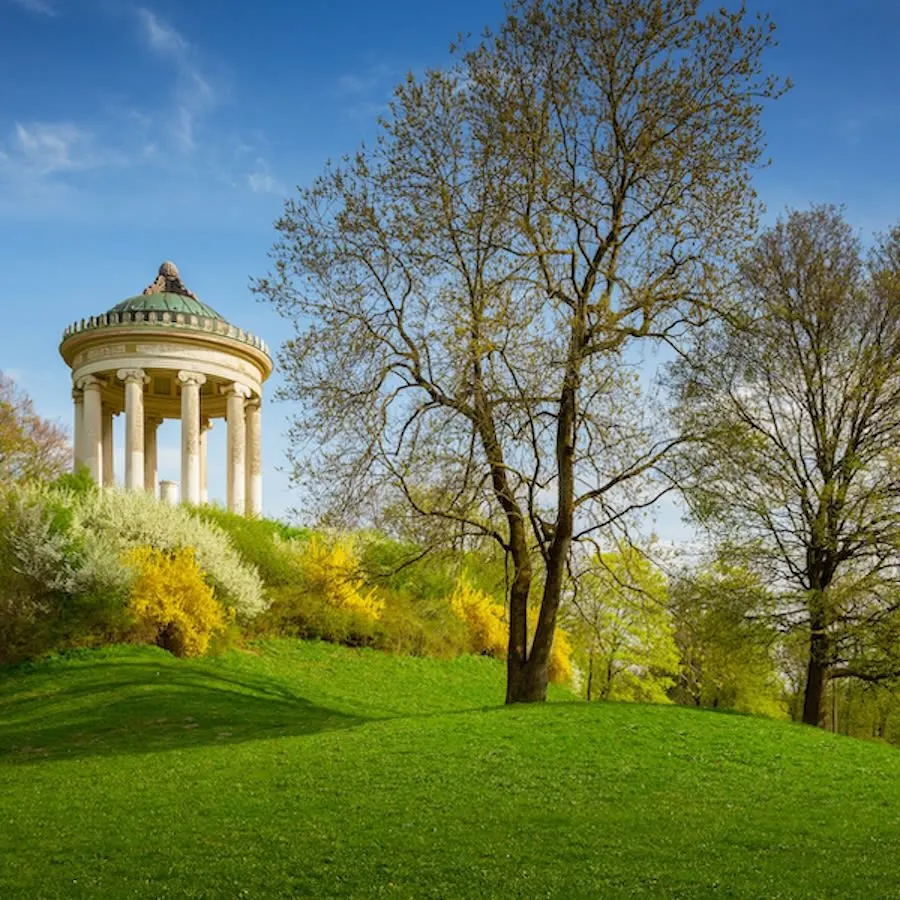
Day 3
Munich to Prague
View More
Day 3
Munich to Prague




Early Morning/Morning
Stroll through the English Garden
The English Garden is one of Europe's largest parks; in fact, it is larger than New York's Central Park. While it is called the "English Garden" after the style of the park, it was actually designed by an American-Englishman and is now a symbol of the very Bavarian city of Munich. The park is a perfect place to escape the city for a long stroll, where you can enjoy the natural scenery and the people watching.

Chinese Tower
Enjoy some Bavarian brews with the locals in Munich's second largest beer garden.
Show More

Eisbachwelle
Watch surfers catch some waves in the middle of the city.
Show More

Chinese Tower
Enjoy some Bavarian brews with the locals in Munich's second largest beer garden.
Show More

Eisbachwelle
Watch surfers catch some waves in the middle of the city.
Show More

Chinese Tower
Enjoy some Bavarian brews with the locals in Munich's second largest beer garden.
Show More

Eisbachwelle
Watch surfers catch some waves in the middle of the city.
Show More
prev
next

Day 3
Munich to Prague
View More


Chinese Tower
 Highlight of English Gardens
Highlight of English GardensEnjoy some Bavarian brews with the locals in Munich's second largest beer garden.
Located in the middle of the English Gardens, this beer garden (7,000 seats) is located beneath the wooden Chinese Tower. The 25 meter high (75 feet) pagoda was built in 1789 during a pan-European craze for all things East Asian. The food stalls around the pagoda offer traditional beer garden food such as Steckerlfisch (grilled fish on a stick), Hendl (roasted chicken) and Schweinshaxn (roasted pork knuckle). The beer served is Hofbräu and a Maß Hell (lager).
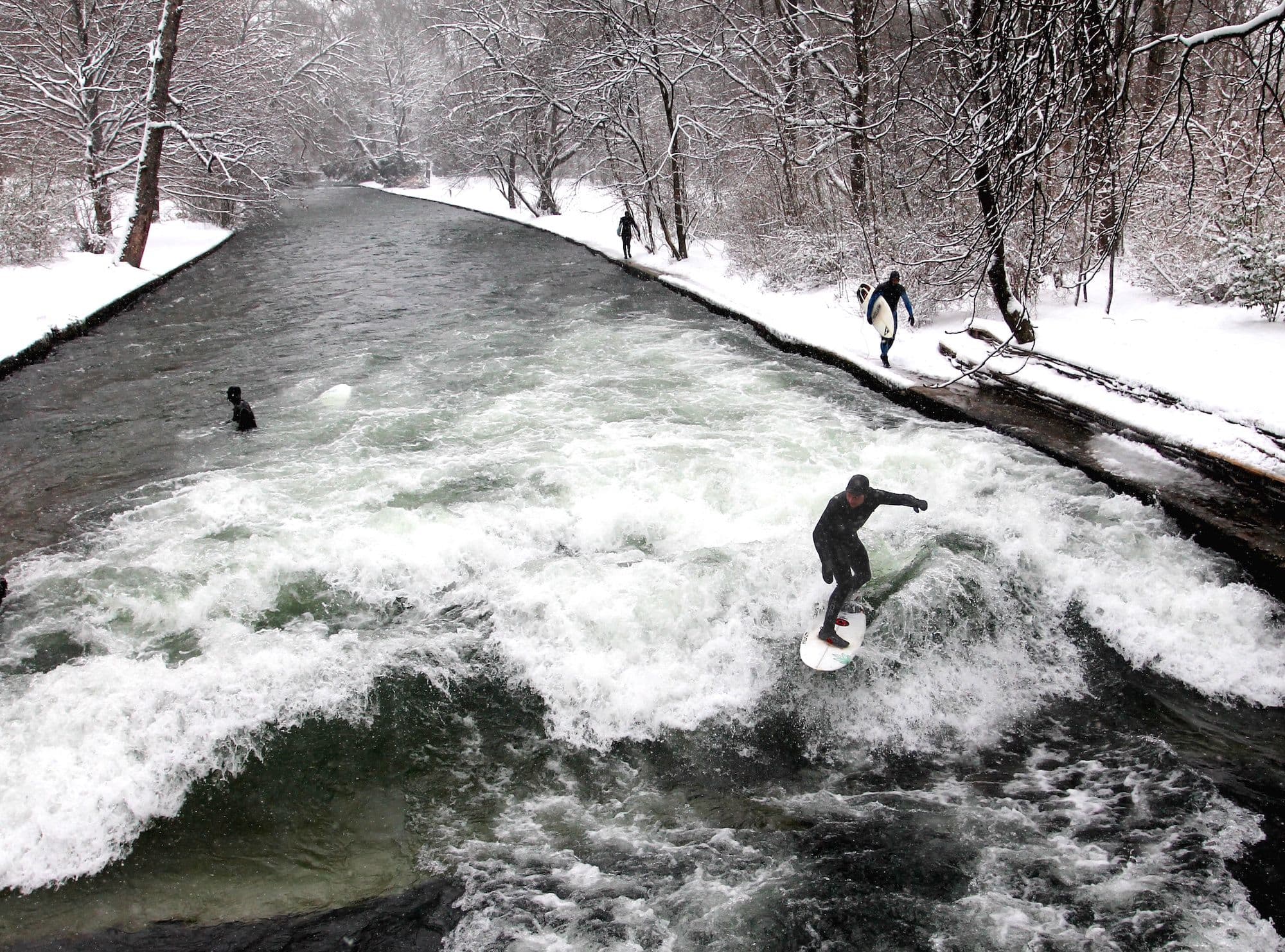
Eisbachwelle
 Highlight of English Gardens
Highlight of English GardensWatch surfers catch some waves in the middle of the city.
At the extreme southern end of the park you can find one of the more unusual and entertaining pastimes enjoyed by the locals - surfing on the man-made Eisbach river. There is a standing wave produced by the water pumping mechanism and surfers line up along the bank taking turns entering the water with their boards. After a minute or so, successful surfers will voluntarily drop out, returning to the end of the line allowing the next person in line an opportunity. The water is cold and shallow (sometimes only 40 cm deep), making it suitable only for experienced surfers.

Chinese Tower
 Highlight of English Gardens
Highlight of English GardensEnjoy some Bavarian brews with the locals in Munich's second largest beer garden.
Located in the middle of the English Gardens, this beer garden (7,000 seats) is located beneath the wooden Chinese Tower. The 25 meter high (75 feet) pagoda was built in 1789 during a pan-European craze for all things East Asian. The food stalls around the pagoda offer traditional beer garden food such as Steckerlfisch (grilled fish on a stick), Hendl (roasted chicken) and Schweinshaxn (roasted pork knuckle). The beer served is Hofbräu and a Maß Hell (lager).

Eisbachwelle
 Highlight of English Gardens
Highlight of English GardensWatch surfers catch some waves in the middle of the city.
At the extreme southern end of the park you can find one of the more unusual and entertaining pastimes enjoyed by the locals - surfing on the man-made Eisbach river. There is a standing wave produced by the water pumping mechanism and surfers line up along the bank taking turns entering the water with their boards. After a minute or so, successful surfers will voluntarily drop out, returning to the end of the line allowing the next person in line an opportunity. The water is cold and shallow (sometimes only 40 cm deep), making it suitable only for experienced surfers.

Chinese Tower
 Highlight of English Gardens
Highlight of English GardensEnjoy some Bavarian brews with the locals in Munich's second largest beer garden.
Located in the middle of the English Gardens, this beer garden (7,000 seats) is located beneath the wooden Chinese Tower. The 25 meter high (75 feet) pagoda was built in 1789 during a pan-European craze for all things East Asian. The food stalls around the pagoda offer traditional beer garden food such as Steckerlfisch (grilled fish on a stick), Hendl (roasted chicken) and Schweinshaxn (roasted pork knuckle). The beer served is Hofbräu and a Maß Hell (lager).

Eisbachwelle
 Highlight of English Gardens
Highlight of English GardensWatch surfers catch some waves in the middle of the city.
At the extreme southern end of the park you can find one of the more unusual and entertaining pastimes enjoyed by the locals - surfing on the man-made Eisbach river. There is a standing wave produced by the water pumping mechanism and surfers line up along the bank taking turns entering the water with their boards. After a minute or so, successful surfers will voluntarily drop out, returning to the end of the line allowing the next person in line an opportunity. The water is cold and shallow (sometimes only 40 cm deep), making it suitable only for experienced surfers.
prev
next


Day 4
Prague
View More
Day 4
Prague




9:00 AM - 12:30 PM
Prague Castle & Royal Route Guided Walk
On this charming guided walk, you will explore the Prague Castle, the largest castle complex in all of Europe. To reach the castle you will trace the Royal Coronation Route and cross the Charles Bridge, whose “speaking stones” reveal the amazing and often cruel history that occurred there. Your tour guide will then take you either through the castle courtyards and into the dramatic St. Vitus Cathedral in the center of the castle complex, or through the upper part of the castle district around the oversized palaces of the old Catholic nobility and the top of the Castle Steps for incomparable views over the red rooftops of the Little Quarter.

Charles Bridge
Cross the river dividing Prague's most historic neighborhoods, and experience one of Europe's most iconic landmarks.
Show More

Maltese Square & Lennon Wall
See a historic wall that has been covered in John Lennon-inspired graffiti since Communist days.
Show More

Prague Castle
Prague Castle is one of the main attractions in Prague and is also the largest castle complex in the world.
Show More

Charles Bridge
Cross the river dividing Prague's most historic neighborhoods, and experience one of Europe's most iconic landmarks.
Show More

Maltese Square & Lennon Wall
See a historic wall that has been covered in John Lennon-inspired graffiti since Communist days.
Show More

Prague Castle
Prague Castle is one of the main attractions in Prague and is also the largest castle complex in the world.
Show More

Charles Bridge
Cross the river dividing Prague's most historic neighborhoods, and experience one of Europe's most iconic landmarks.
Show More
prev
next

Day 4
Prague
View More

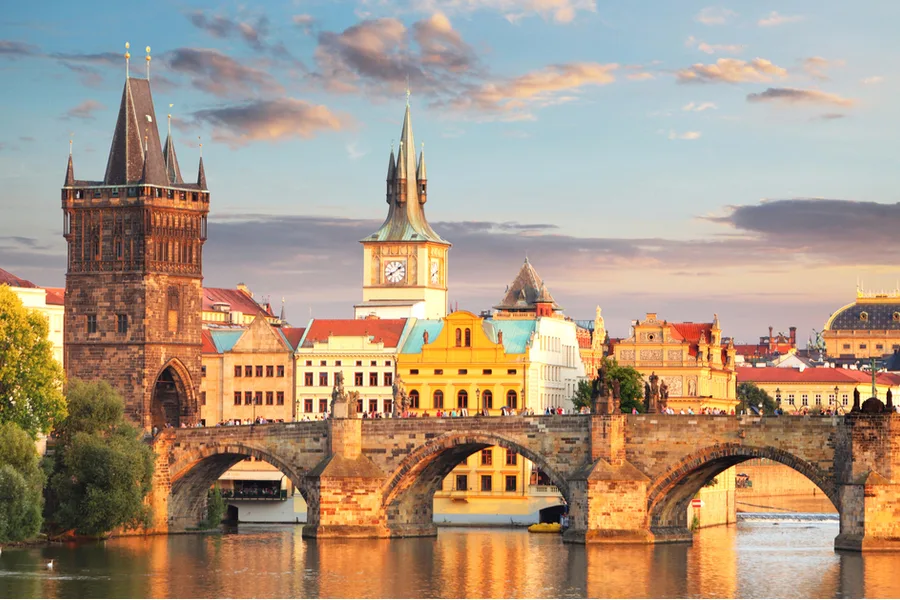
Charles Bridge
 Highlight of Royal Route Guided Tour
Highlight of Royal Route Guided TourCross the river dividing Prague's most historic neighborhoods, and experience one of Europe's most iconic landmarks.
Bridge construction began in 1357 under King Charles IV (hence the name), and it was the only bridge across the Vltava River until 1841. 30 baroque statues of saints line the bridge, and it is filled with street artists and entertainers. Not to be missed.

Maltese Square & Lennon Wall
 Highlight of Royal Route Guided Tour
Highlight of Royal Route Guided TourSee a historic wall that has been covered in John Lennon-inspired graffiti since Communist days.
The wall has been covered in graffiti since the 1960s, and during Communism anti-regime sentiment was common. John Lennon's assassination inspired grafitti reflecting his song, Imagine, which earned the wall its current moniker. It is now a favorite gathering place for tourists, and musicians sometimes congregate there as well. Just around the corner is the Maltese Square, which is one of Prague's more quaint and relaxed public spaces, despite being just off the main tourist route.

Prague Castle
 Highlight of Royal Route Guided Tour
Highlight of Royal Route Guided TourPrague Castle is one of the main attractions in Prague and is also the largest castle complex in the world.
The Prague Castle is the largest castle complex in the world with structures dating back to the 9th century. The St Vitus Cathedral and Basilica of St George can be found within the castle walls. The Prague Castle also includes several gardens, palaces, and a monastery. This castle was the seat of power for the Kings of Bohemia, Holy Roman Emperors, and presidents of former Czechoslovakia. Prague Castle is a UNESCO world heritage site and is one of the most visited places in the country.

Charles Bridge
 Highlight of Royal Route Guided Tour
Highlight of Royal Route Guided TourCross the river dividing Prague's most historic neighborhoods, and experience one of Europe's most iconic landmarks.
Bridge construction began in 1357 under King Charles IV (hence the name), and it was the only bridge across the Vltava River until 1841. 30 baroque statues of saints line the bridge, and it is filled with street artists and entertainers. Not to be missed.

Maltese Square & Lennon Wall
 Highlight of Royal Route Guided Tour
Highlight of Royal Route Guided TourSee a historic wall that has been covered in John Lennon-inspired graffiti since Communist days.
The wall has been covered in graffiti since the 1960s, and during Communism anti-regime sentiment was common. John Lennon's assassination inspired grafitti reflecting his song, Imagine, which earned the wall its current moniker. It is now a favorite gathering place for tourists, and musicians sometimes congregate there as well. Just around the corner is the Maltese Square, which is one of Prague's more quaint and relaxed public spaces, despite being just off the main tourist route.

Prague Castle
 Highlight of Royal Route Guided Tour
Highlight of Royal Route Guided TourPrague Castle is one of the main attractions in Prague and is also the largest castle complex in the world.
The Prague Castle is the largest castle complex in the world with structures dating back to the 9th century. The St Vitus Cathedral and Basilica of St George can be found within the castle walls. The Prague Castle also includes several gardens, palaces, and a monastery. This castle was the seat of power for the Kings of Bohemia, Holy Roman Emperors, and presidents of former Czechoslovakia. Prague Castle is a UNESCO world heritage site and is one of the most visited places in the country.

Charles Bridge
 Highlight of Royal Route Guided Tour
Highlight of Royal Route Guided TourCross the river dividing Prague's most historic neighborhoods, and experience one of Europe's most iconic landmarks.
Bridge construction began in 1357 under King Charles IV (hence the name), and it was the only bridge across the Vltava River until 1841. 30 baroque statues of saints line the bridge, and it is filled with street artists and entertainers. Not to be missed.
prev
next

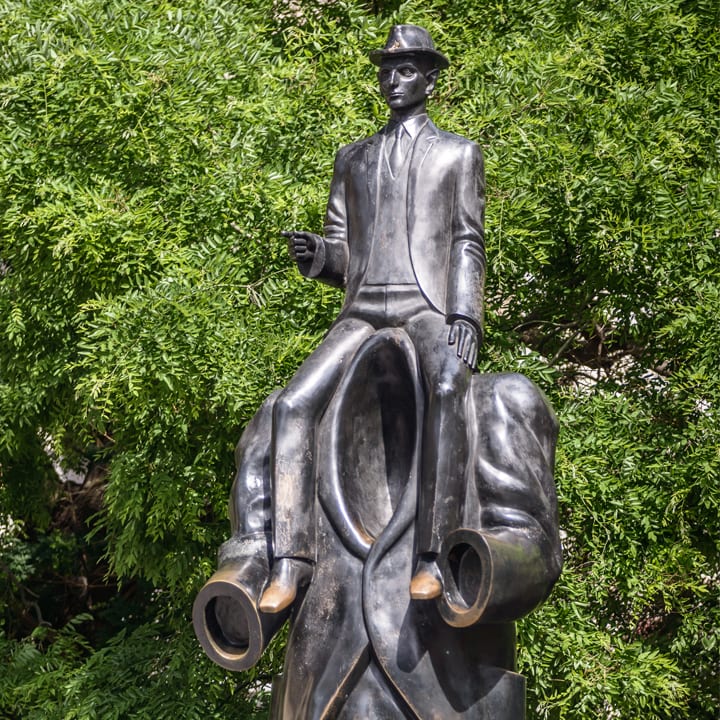
Day 5
Prague
View More
Day 5
Prague



Morning/Mid-Day
Visit Prague's Jewish Quarter
Jews have lived in Prague since its beginnings in the 10th century and have endowed it with a rich heritage. The ghetto was created in the 12th century, as Jews were forced to live separately from Christians. Despite persecution, the community prospered, but sadly, only a small minority survived the Nazi occupation. A lasting legacy remains, including synagogues, architecture, and a fascinating cemetery.

Spanish Synagogue
Discover the synagogue considered by many to be Prague's most beautiful.
Show More

Old-New Synagogue
See the oldest surviving synagogue in Europe and also one of Prague's earliest Gothic buildings.
Show More

Old Jewish Cemetery
Take an unforgettable visit to one of Europe's largest medieval Jewish cemeteries.
Show More

Spanish Synagogue
Discover the synagogue considered by many to be Prague's most beautiful.
Show More

Old-New Synagogue
See the oldest surviving synagogue in Europe and also one of Prague's earliest Gothic buildings.
Show More

Old Jewish Cemetery
Take an unforgettable visit to one of Europe's largest medieval Jewish cemeteries.
Show More

Spanish Synagogue
Discover the synagogue considered by many to be Prague's most beautiful.
Show More
prev
next

Day 5
Prague
View More


Spanish Synagogue
 Highlight of Jewish Quarter
Highlight of Jewish QuarterDiscover the synagogue considered by many to be Prague's most beautiful.
Completed in 1868, the Spanish Synagogue is the newest synagogue in Prague's Jewish Quarter, but happens to be built on the site of the former Oldest Synagogue in Prague. It is built in a stunning Spanish Moorish style as a symbol of the flowering of the Jewish culture which occurred under Muslim rule on the Iberian Peninsula.

Old-New Synagogue
 Highlight of Jewish Quarter
Highlight of Jewish QuarterSee the oldest surviving synagogue in Europe and also one of Prague's earliest Gothic buildings.
When built it was Prague’s newest synagogue, but over time became its oldest – hence the “Old-New”. A beautiful ark holds the Torah and legend says its attic is the hiding place of the legendary clay Golem.

Old Jewish Cemetery
 Highlight of Jewish Quarter
Highlight of Jewish QuarterTake an unforgettable visit to one of Europe's largest medieval Jewish cemeteries.
As the Jewish Ghetto was quite cramped, there was no room to expand the cemetery. Unable to acquire further land, and not wishing to dishonor ancestors through the demolition of existing graves, Prague's Jews buried their loved ones in multiple levels. Gravestones are packed in tightly and in some areas the burials reach 12 layers!

Spanish Synagogue
 Highlight of Jewish Quarter
Highlight of Jewish QuarterDiscover the synagogue considered by many to be Prague's most beautiful.
Completed in 1868, the Spanish Synagogue is the newest synagogue in Prague's Jewish Quarter, but happens to be built on the site of the former Oldest Synagogue in Prague. It is built in a stunning Spanish Moorish style as a symbol of the flowering of the Jewish culture which occurred under Muslim rule on the Iberian Peninsula.

Old-New Synagogue
 Highlight of Jewish Quarter
Highlight of Jewish QuarterSee the oldest surviving synagogue in Europe and also one of Prague's earliest Gothic buildings.
When built it was Prague’s newest synagogue, but over time became its oldest – hence the “Old-New”. A beautiful ark holds the Torah and legend says its attic is the hiding place of the legendary clay Golem.

Old Jewish Cemetery
 Highlight of Jewish Quarter
Highlight of Jewish QuarterTake an unforgettable visit to one of Europe's largest medieval Jewish cemeteries.
As the Jewish Ghetto was quite cramped, there was no room to expand the cemetery. Unable to acquire further land, and not wishing to dishonor ancestors through the demolition of existing graves, Prague's Jews buried their loved ones in multiple levels. Gravestones are packed in tightly and in some areas the burials reach 12 layers!

Spanish Synagogue
 Highlight of Jewish Quarter
Highlight of Jewish QuarterDiscover the synagogue considered by many to be Prague's most beautiful.
Completed in 1868, the Spanish Synagogue is the newest synagogue in Prague's Jewish Quarter, but happens to be built on the site of the former Oldest Synagogue in Prague. It is built in a stunning Spanish Moorish style as a symbol of the flowering of the Jewish culture which occurred under Muslim rule on the Iberian Peninsula.
prev
next

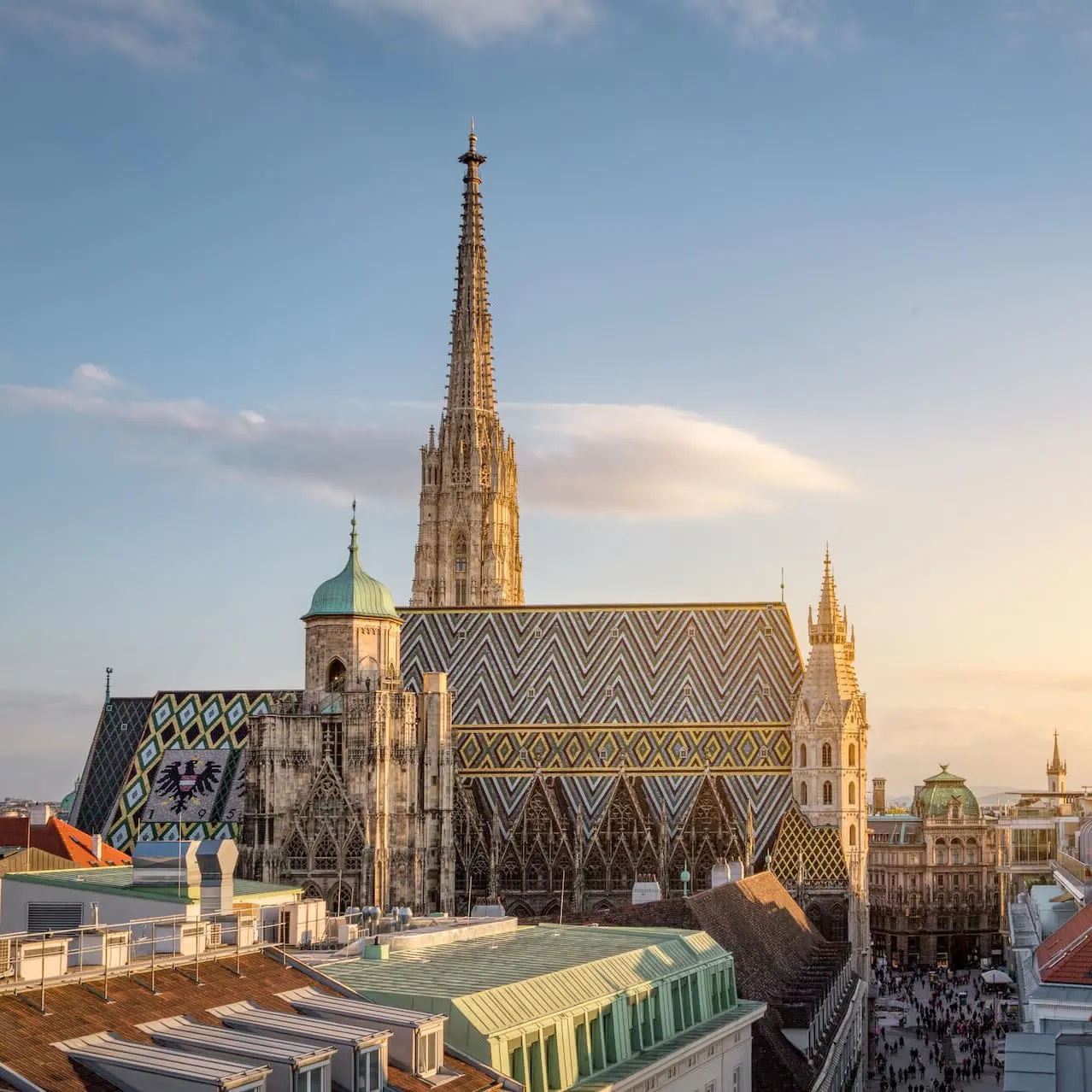
Day 6
Prague to Vienna
View More
Day 6
Prague to Vienna




9:35 AM
Transfer to Station by Taxi or Public Transport
Most trains depart from Prague Main Station (Praha hl.n.) station, the largest station in the city. Before spending money on a transfer, be sure to check whether your hotel is within easy walking distance. Also consider that the cheapest and sometimes fastest way to reach your hotel may be by public transport. If staying at a hotel, they can order a reliable taxi. Some private transfers will even help with your bags. Uber is also available for those with the app. Information on finding your departure platform is provided in the itinerary mobile app.

Day 6
Prague to Vienna
View More



Day 7
Vienna
View More
Day 7
Vienna



9:00 AM - 11:00 AM
Guided Walk through Vienna's Inner City
This tour takes you back in history to explore the Vienna that stood within the old city walls. You will learn about the humble beginnings of Vienna before it became the capital of a great empire and one of the most important cities in Europe. You will discover how Vienna's early inhabitants lived and how they left their mark on the city and its beautiful Medieval, Renaissance, and Baroque architecture.

Day 7
Vienna
View More


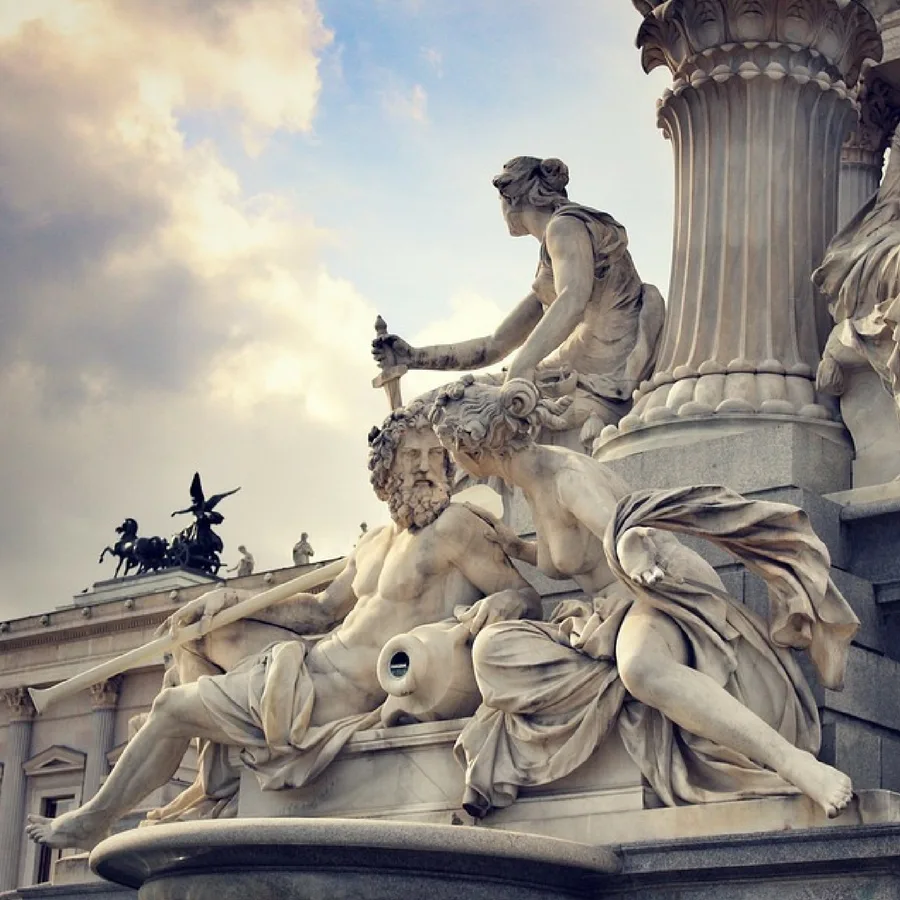
Day 8
Vienna to Budapest
View More
Day 8
Vienna to Budapest





Early Morning/Morning
Tour the Schönbrunn Palace
The magnificent Baroque palace of Schönbrunn is most famously associated with Empress Maria Theresa, who lived here surrounded by 16 little archdukes and duchesses who also happened to be her children. On your tour of the palace, you will see how Maria Theresa and other past imperial residents lived. No visit is complete without a stroll in the vast gardens surrounding the palace.

Schönbrunn Zoo
Join local families enjoying one of Europe's best zoos.
Show More

Schönbrunn Gardens
Get lost in the huge imperial gardens.
Show More

Schönbrunn Zoo
Join local families enjoying one of Europe's best zoos.
Show More

Schönbrunn Gardens
Get lost in the huge imperial gardens.
Show More

Schönbrunn Zoo
Join local families enjoying one of Europe's best zoos.
Show More

Schönbrunn Gardens
Get lost in the huge imperial gardens.
Show More
prev
next

Day 8
Vienna to Budapest
View More


Schönbrunn Zoo
 Highlight of Schönbrunn Palace
Highlight of Schönbrunn PalaceJoin local families enjoying one of Europe's best zoos.
With an entrance directly connected to the Schönbrunn palace gardens, visiting the zoo can be a great addition to any trip to the palace. Founded as an imperial menagerie in 1752, it is the oldest continually operated zoo in the world, and today is home to many rare species such as giant pandas.
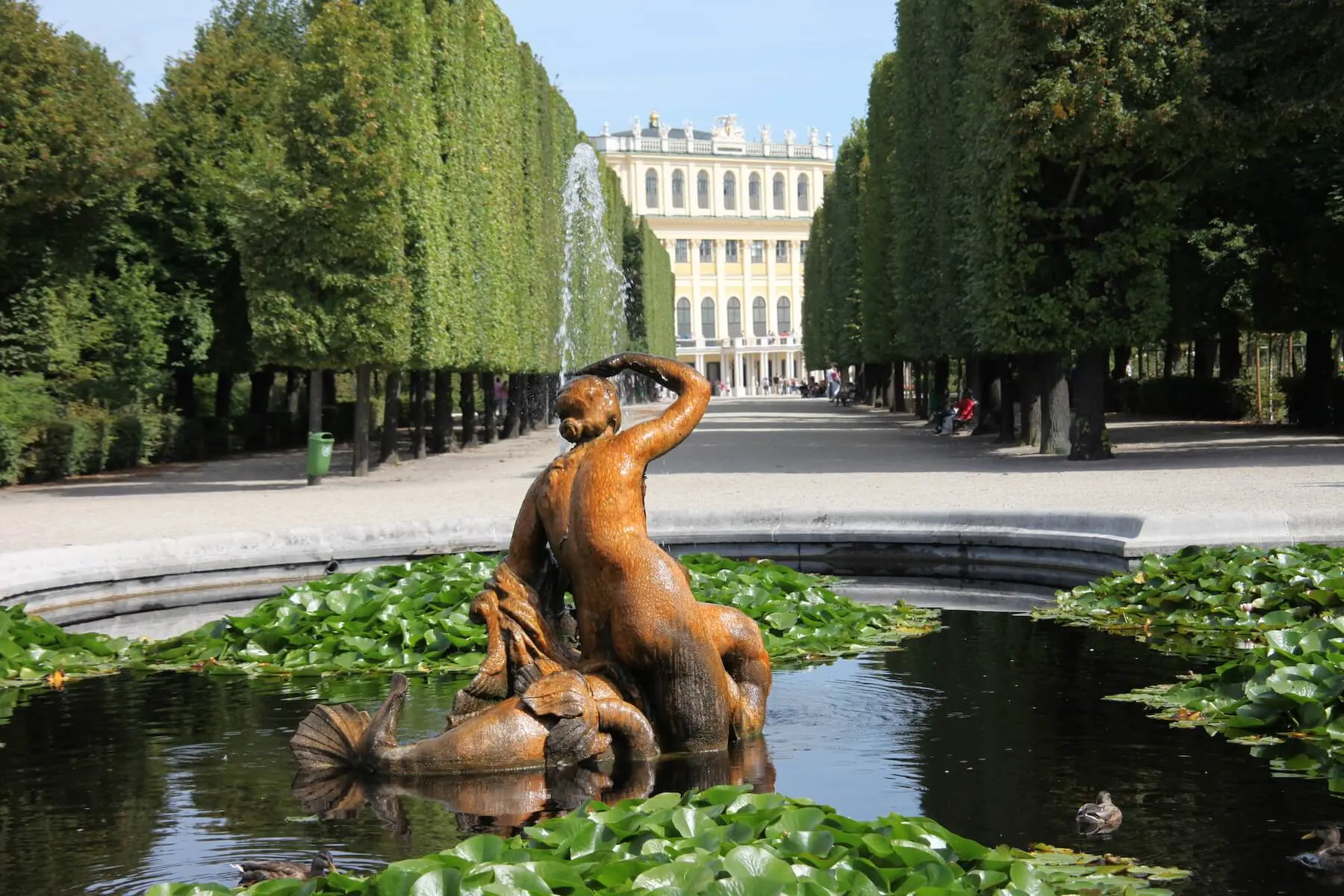
Schönbrunn Gardens
 Highlight of Schönbrunn Palace
Highlight of Schönbrunn PalaceGet lost in the huge imperial gardens.
The beautiful park is a mix of formal gardens and woodlands, and is dotted with enchanting statues & fountains, including a massive fountain of Neptune. The Gloriette pavilion sits on a rise opposite the palace and commands a wonderful view. Kids will love the labyrinth, racing to find the tower at the center of the maze.

Schönbrunn Zoo
 Highlight of Schönbrunn Palace
Highlight of Schönbrunn PalaceJoin local families enjoying one of Europe's best zoos.
With an entrance directly connected to the Schönbrunn palace gardens, visiting the zoo can be a great addition to any trip to the palace. Founded as an imperial menagerie in 1752, it is the oldest continually operated zoo in the world, and today is home to many rare species such as giant pandas.

Schönbrunn Gardens
 Highlight of Schönbrunn Palace
Highlight of Schönbrunn PalaceGet lost in the huge imperial gardens.
The beautiful park is a mix of formal gardens and woodlands, and is dotted with enchanting statues & fountains, including a massive fountain of Neptune. The Gloriette pavilion sits on a rise opposite the palace and commands a wonderful view. Kids will love the labyrinth, racing to find the tower at the center of the maze.

Schönbrunn Zoo
 Highlight of Schönbrunn Palace
Highlight of Schönbrunn PalaceJoin local families enjoying one of Europe's best zoos.
With an entrance directly connected to the Schönbrunn palace gardens, visiting the zoo can be a great addition to any trip to the palace. Founded as an imperial menagerie in 1752, it is the oldest continually operated zoo in the world, and today is home to many rare species such as giant pandas.

Schönbrunn Gardens
 Highlight of Schönbrunn Palace
Highlight of Schönbrunn PalaceGet lost in the huge imperial gardens.
The beautiful park is a mix of formal gardens and woodlands, and is dotted with enchanting statues & fountains, including a massive fountain of Neptune. The Gloriette pavilion sits on a rise opposite the palace and commands a wonderful view. Kids will love the labyrinth, racing to find the tower at the center of the maze.
prev
next


Day 9
Budapest
View More
Day 9
Budapest




Early Morning/Morning
Hungarian Parliament and its Surroundings
The Hungarian Parliament building is a magnificent sight as it rises above the waters of the Danube, and the interior is also quite jaw-dropping. As a visitor, you may even feel a bit overwhelmed by the sumptuous décor and attention-to-detail. You could be forgiven for expecting a queen to arrive or an aristocratic ball to break out at any moment.

Former Museum of Ethnography
This building once housed the Hungarian Supreme Court and the Ethnographic museum. The museum is relocating to City Park and will open in 2022.
Show More

Shoes on the Danube Bank
Reflect at a waterside sculpture of shoes memorializing the victims of fascism who died at this spot.
Show More

Hungarian Parliament
Tour this massive and stunning Gothic Revival–style edifice with a guide.
Show More

Former Museum of Ethnography
This building once housed the Hungarian Supreme Court and the Ethnographic museum. The museum is relocating to City Park and will open in 2022.
Show More

Shoes on the Danube Bank
Reflect at a waterside sculpture of shoes memorializing the victims of fascism who died at this spot.
Show More

Hungarian Parliament
Tour this massive and stunning Gothic Revival–style edifice with a guide.
Show More

Former Museum of Ethnography
This building once housed the Hungarian Supreme Court and the Ethnographic museum. The museum is relocating to City Park and will open in 2022.
Show More
prev
next

Day 9
Budapest
View More


Former Museum of Ethnography
 Highlight of Hungarian Parliament & Nearby
Highlight of Hungarian Parliament & NearbyThis building once housed the Hungarian Supreme Court and the Ethnographic museum. The museum is relocating to City Park and will open in 2022.
It was the second place winner in the competition to design the Hungarian Parliament. Many believe it is as beautiful at the Parliament, especially it's interiors.
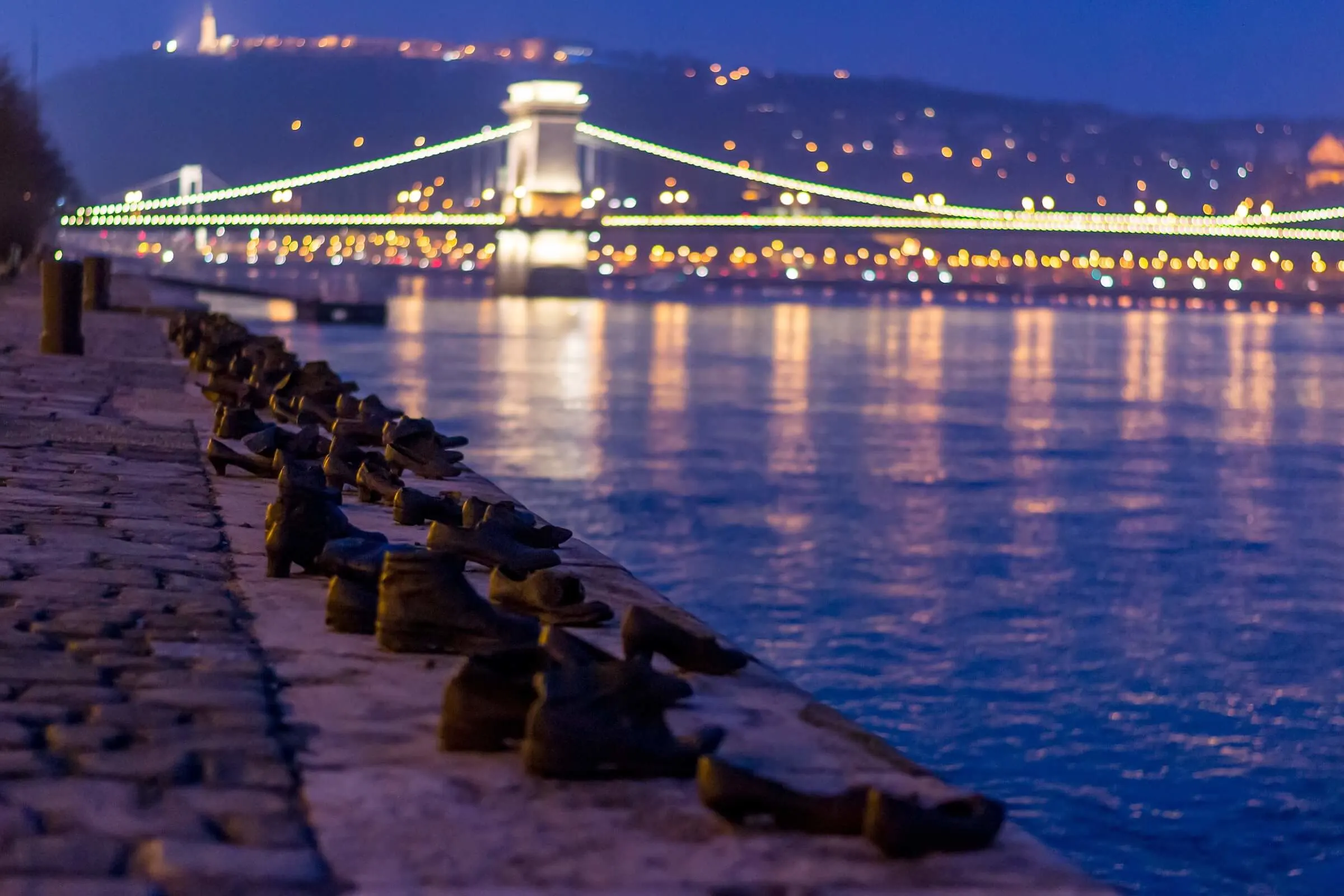
Shoes on the Danube Bank
 Highlight of Hungarian Parliament & Nearby
Highlight of Hungarian Parliament & NearbyReflect at a waterside sculpture of shoes memorializing the victims of fascism who died at this spot.
This moving memorial consists of empty shoes by the riverbank. Near the end of World War II a fascist party took control in Hungary. Jews were lined up along the river bank, forced to step out of their shoes (so they could be collected later), and then machine gunned into the river.

Hungarian Parliament
 Highlight of Hungarian Parliament & Nearby
Highlight of Hungarian Parliament & NearbyTour this massive and stunning Gothic Revival–style edifice with a guide.
The Parliament is ostentatious, but undeniably grand and beautiful. A teeming mass of spires, arches, and towers surrounds the central dome, beneath which the royal crown of Hungary lies under armed guard. Tours of the lavish interiors include the crown, parliament chambers, and grand entry hall. Pre-purchasing tickets is recommended as they often sell out well in advance.

Former Museum of Ethnography
 Highlight of Hungarian Parliament & Nearby
Highlight of Hungarian Parliament & NearbyThis building once housed the Hungarian Supreme Court and the Ethnographic museum. The museum is relocating to City Park and will open in 2022.
It was the second place winner in the competition to design the Hungarian Parliament. Many believe it is as beautiful at the Parliament, especially it's interiors.

Shoes on the Danube Bank
 Highlight of Hungarian Parliament & Nearby
Highlight of Hungarian Parliament & NearbyReflect at a waterside sculpture of shoes memorializing the victims of fascism who died at this spot.
This moving memorial consists of empty shoes by the riverbank. Near the end of World War II a fascist party took control in Hungary. Jews were lined up along the river bank, forced to step out of their shoes (so they could be collected later), and then machine gunned into the river.

Hungarian Parliament
 Highlight of Hungarian Parliament & Nearby
Highlight of Hungarian Parliament & NearbyTour this massive and stunning Gothic Revival–style edifice with a guide.
The Parliament is ostentatious, but undeniably grand and beautiful. A teeming mass of spires, arches, and towers surrounds the central dome, beneath which the royal crown of Hungary lies under armed guard. Tours of the lavish interiors include the crown, parliament chambers, and grand entry hall. Pre-purchasing tickets is recommended as they often sell out well in advance.

Former Museum of Ethnography
 Highlight of Hungarian Parliament & Nearby
Highlight of Hungarian Parliament & NearbyThis building once housed the Hungarian Supreme Court and the Ethnographic museum. The museum is relocating to City Park and will open in 2022.
It was the second place winner in the competition to design the Hungarian Parliament. Many believe it is as beautiful at the Parliament, especially it's interiors.
prev
next

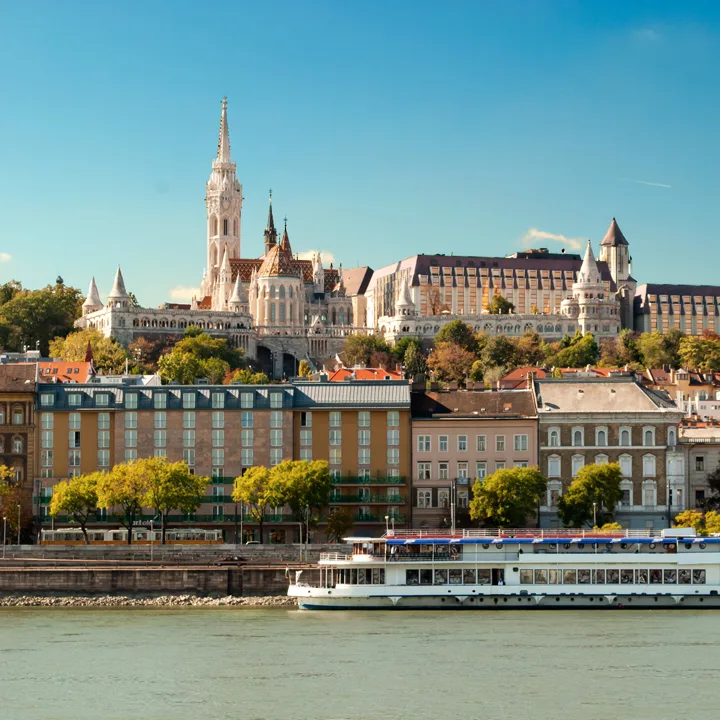
Day 10
Budapest
View More
Day 10
Budapest


9:00 AM - 12:30 PM
Best of Budapest: Half-Day Walking Tour of Highlights & Hidden Finds
During your tour you will take in a gorgeous vista of the city from the Fisherman's Bastion, explore the winding streets of the Castle District, gaze in awe at the striking interior of St. Stephen's Basilica, travel along the city's most elegant avenue and more. Along the way you will experience the city as a local does, stopping to check out intimate courtyards, enjoying a pastry and soaking in the ambiance of Budapest's most elegant cafes.

Day 10
Budapest
View More



Day 11
Depart Budapest
View More
Day 11
Depart Budapest

To Be Determined
Transfer to Airport by Taxi
Budapest has one main airport, Budapest Ferenc Liszt International Airport, where almost all visitors depart. Your hotel can arrange a reliable taxi (there is no Uber in Budapest). You can also arrange a private transfer. If you are picked up about two hours and forty-five minutes before your departure time, you should arrive at the airport with about two hours to spare, depending on traffic. If you are leaving during rush hour, you may want to budget an extra fifteen to thirty minutes.

Day 11
Depart Budapest
View More


What's Included In Your Trip

Pre-Paid Tours and Activities:
- Guided Walk Tour of Historic Munich
- Prague Castle & Royal Route Guided Walk
- Guided Walk through Vienna's Inner City
- Best of Budapest: Half-Day Walking Tour of Highlights & Hidden Finds
- City Card for Munich, including discounts to many popular attractions

Pre-Paid Transportation:
- 2nd Class Train Tickets from Munich to Prague
- 2nd Class Train Tickets from Prague to Vienna
- 2nd Class Train Tickets from Wien Hbf to Budapest-Keleti
- Public Transport Tickets for Munich and Vienna
- Private Transfer from the Budapest Rail Station

Accommodation:
- 3 nights at a hotel of your choice in Munich
- 4 nights at a hotel of your choice in Prague
- 3 nights at a hotel of your choice in Vienna
- 4 nights at a hotel of your choice in Budapest

Go Real Travel Mobile App:
- Itinerary Plan & Reservations Info
- Points of Interest
- Detailed Travel Information
- Maps & Directions
Other Trips You May Like

8 Days
From$1729USD

12 Days
From$2200USD
A 12-Day Prague, Vienna, Budapest, and Bratislava Itinerary

Czech Republic, Austria, Slovakia, Hungary

14 Days
From$2897USD
14-Day Trip to Historic Munich, Salzburg, Vienna, and Prague

Germany, Austria, Czech Republic

10 Days
From$2249USD
Perfect Whirlwind Itinerary to Prague, Salzburg, Vienna & Budapest

Czech Republic, Austria, Hungary

14 Days
From$2350USD
Imperial Elegance: Prague, Vienna and Budapest Itinerary 14 Days

Czech Republic, Austria, Hungary

7 Days
From$1489USD

15 Days
From$2750USD
Prague, Vienna, and Budapest, 15 Days of Must See Sights & Local Scenes

Czech Republic, Austria, Hungary

8 Days
From$1425USD
Enchanting Central Europe: 8-Days in Prague, Vienna & Budapest

Czech Republic, Austria, Hungary

12 Days
From$2675USD
Jewish Heritage and Scenic Rivers: A Journey through Prague, Vienna, and Budapest

Hungary, Austria, Czech Republic

8 Days
From$1729USD

12 Days
From$2200USD
A 12-Day Prague, Vienna, Budapest, and Bratislava Itinerary

Czech Republic, Austria, Slovakia, Hungary

14 Days
From$2897USD
14-Day Trip to Historic Munich, Salzburg, Vienna, and Prague

Germany, Austria, Czech Republic

10 Days
From$2249USD
Perfect Whirlwind Itinerary to Prague, Salzburg, Vienna & Budapest

Czech Republic, Austria, Hungary

14 Days
From$2350USD
Imperial Elegance: Prague, Vienna and Budapest Itinerary 14 Days

Czech Republic, Austria, Hungary

7 Days
From$1489USD

15 Days
From$2750USD
Prague, Vienna, and Budapest, 15 Days of Must See Sights & Local Scenes

Czech Republic, Austria, Hungary

8 Days
From$1425USD
Enchanting Central Europe: 8-Days in Prague, Vienna & Budapest

Czech Republic, Austria, Hungary

12 Days
From$2675USD
Jewish Heritage and Scenic Rivers: A Journey through Prague, Vienna, and Budapest

Hungary, Austria, Czech Republic
prev
next
Featured Blogs
prev
next
Our Customers Say It Best
Otto Chuy, Los Angeles, California
I am still surprised how everything worked as planned, without a hitch. All instructions in your itinerary were precise and correct. Your suggestions and comments in each of the locations we went to were very helpful. All your guides, without exception, were wonderful and exactly on time. 

Kathy Mongeau, Ottawa, Ontario
My sister, Ann Ibberson, and I have been back home for a few weeks now and still go on and on about our fabulous trip. We were just blown away in every respect. Given the fact that we only had 1 ½ weeks, you had everything arranged for us so efficiently and your contacts who we dealt with for transfers, tours, hotels were extremely professional and personable. Things could not have gone better. 

Clive Andrew, Brisbane, Queensland
Just a quick note to let you know that I am back home now after probably the best overseas holiday that I have ever had, in no small part due to your very capable organization booking of hotels, tours, & trains. There was just nothing that went wrong with the timings etc. 

Malini Dutta, Boston, Massachusetts
We can't thank you enough for the detailed plans, maps, and suggestions. It really felt that someone was holding our hands and showing us around. We had all the excitement of discovering foreign lands, with none of the problems that can happen while negotiating unfamiliar places. In fact, all the cities felt like home within a few hours of arriving and exploring. 

Bev and Mark Frankel, Williamsburg, Virginia
We could not be more pleased with Go Real Travel! You took the guess work out of things like public transport but still managed to allow us the freedom to tour as we wanted. Our guides were exceptional and every time I saw a Viking Cruise tour of 25 people, I realized the quality experience we were getting with Go Real. 

Marianne Strydom, Paarl, South Africa
I just wanted to thank you for organizing an amazing trip for me – I packed in so much in such a short period of time and everything was just perfect. The way you do things makes it possible to really get to know the destination, which for me as a travel agent could not have been better. 

Otto Chuy, Los Angeles, California
I am still surprised how everything worked as planned, without a hitch. All instructions in your itinerary were precise and correct. Your suggestions and comments in each of the locations we went to were very helpful. All your guides, without exception, were wonderful and exactly on time. 

Kathy Mongeau, Ottawa, Ontario
My sister, Ann Ibberson, and I have been back home for a few weeks now and still go on and on about our fabulous trip. We were just blown away in every respect. Given the fact that we only had 1 ½ weeks, you had everything arranged for us so efficiently and your contacts who we dealt with for transfers, tours, hotels were extremely professional and personable. Things could not have gone better. 

Clive Andrew, Brisbane, Queensland
Just a quick note to let you know that I am back home now after probably the best overseas holiday that I have ever had, in no small part due to your very capable organization booking of hotels, tours, & trains. There was just nothing that went wrong with the timings etc. 

Malini Dutta, Boston, Massachusetts
We can't thank you enough for the detailed plans, maps, and suggestions. It really felt that someone was holding our hands and showing us around. We had all the excitement of discovering foreign lands, with none of the problems that can happen while negotiating unfamiliar places. In fact, all the cities felt like home within a few hours of arriving and exploring. 

Bev and Mark Frankel, Williamsburg, Virginia
We could not be more pleased with Go Real Travel! You took the guess work out of things like public transport but still managed to allow us the freedom to tour as we wanted. Our guides were exceptional and every time I saw a Viking Cruise tour of 25 people, I realized the quality experience we were getting with Go Real. 

Marianne Strydom, Paarl, South Africa
I just wanted to thank you for organizing an amazing trip for me – I packed in so much in such a short period of time and everything was just perfect. The way you do things makes it possible to really get to know the destination, which for me as a travel agent could not have been better. 



Explore cities in more detail
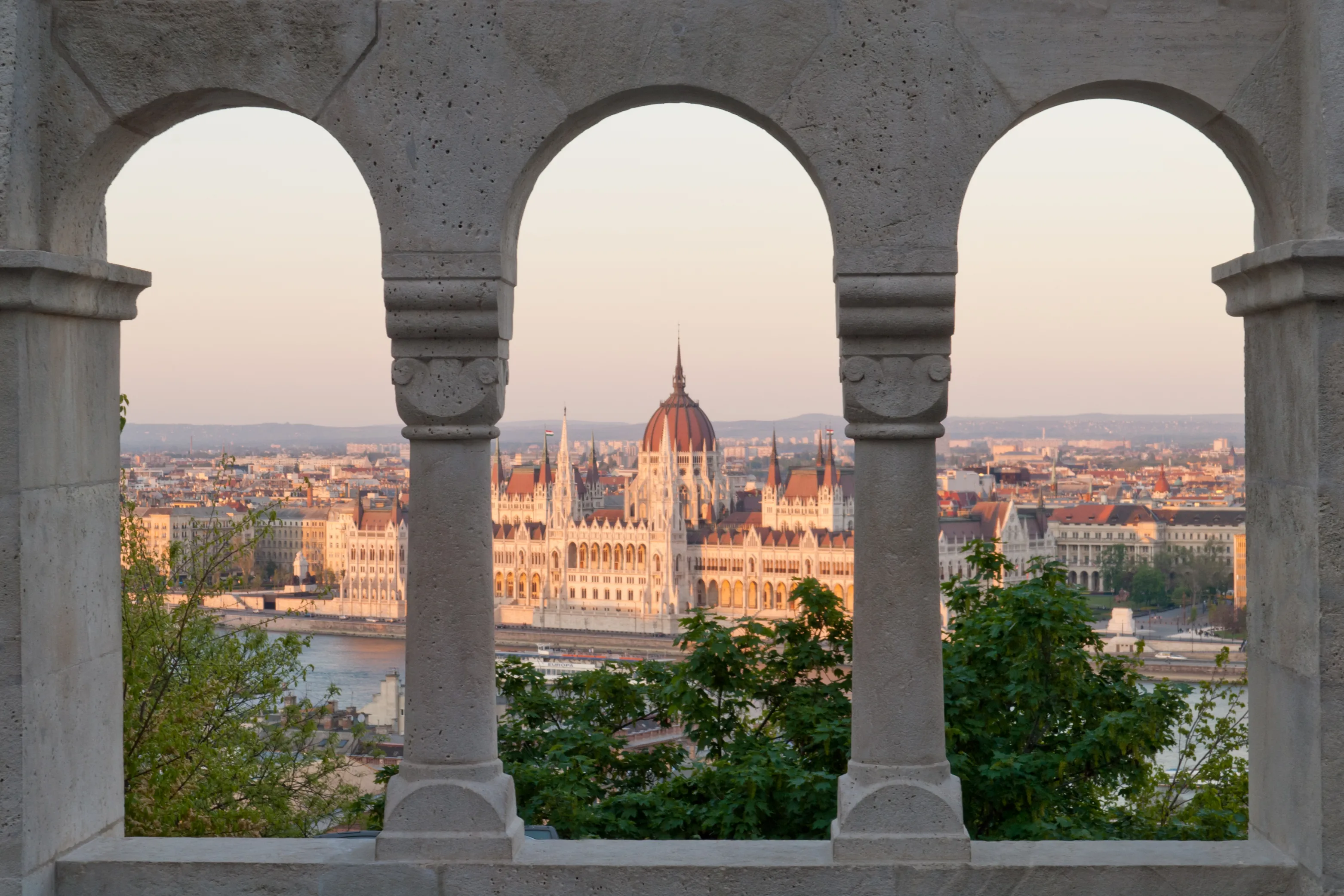
Budapest
Situated at the heart of Europe, Budapest is the capital of Hungary, appropriately named 'The Pearl of the Danube,' for its fixating and almost haunting beauty. Formerly two separate cities, Buda and Pest were forged into one by time, occupation, and the eight bridges that anchor them together today. From the Romans to the Communists, each occupier left its flavor profile in Budapest, evident in the famous spicy Hungarian stew known as 'goulash.' Budapest is a melting pot of history, culture, and taste, from the magnificent Baroque and neo-Gothic architecture to the Turkish thermal baths. After a long day of sightseeing, treat yourself to a glass of Tokaj, what King Louis XIV of France referred to as the "Wine of Kings, King of Wines". Budapest has a flavor to satisfy any taste.
Read More
Learn About Budapest
Build Budapest Trip

Salzburg
You've probably heard this before— the city of Salzburg is straight out of a fairytale. Nestled in the mountains, this romantic city's Baroque architecture with colorful domes and spires is especially striking against the ancient fortress and Austrian Alpine backdrop. If you're looking for an amazing view, climb up to Hohensalzburg Fortress, Central Europe's largest intact fortress, for a jaw-dropping panorama of the city backed by misty mountains. Perhaps most famous for being the birthplace of the renowned composer Wolfgang Amadeus Mozart and the filming location for the classic The Sound of Music, this city has much to offer. Salzburg has become an important artistic and cultural center, featuring magnificent concert halls that uphold the city's tradition of classical music every day of the year, as well as acclaimed art exhibitions and museums. If you do it right, your visit to Salzburg will immerse you in the city's unforgettable atmosphere and keep you coming back for more.
Read More
Learn About Salzburg
Build Salzburg Trip

Nuremberg
One of the most authentic, storied German destinations, Nuremberg's picturesque old town, glorious castle, and buzzing Christmas Market makes this city a time-true classic. The ideal gateway to old Bavaria, Nuremberg offers a primer in German history before you embark on the lovely journey through old Bavaria, known as the Romantic Road. Considered the capital of the Holy Roman Empire in the middle ages, Nuremberg would have felt like the center of the world as a procession of kings and emperors passed through its magnificent gates. When the German Renaissance came, Nuremberg was at its heart. Albrecht Dürer, the great German master artist, was born here, and Martin Luther called Nuremberg Germany's 'eyes and ears'. Skip forward a few centuries, and the city took a dark turn, as Nuremberg became a gathering point for the German National Socialists. Slightly outside of town, you can still find the Nazi Party Rallying Grounds, a sobering reminder of the not so distant past. If it all gets too heavy, you can end the day with a glass of rotbier (red beer) and mull it over. Nuremberg is a must-see for anyone who wants to delve into Germany's past.
Read More
Learn About Nuremberg
Build Nuremberg Trip
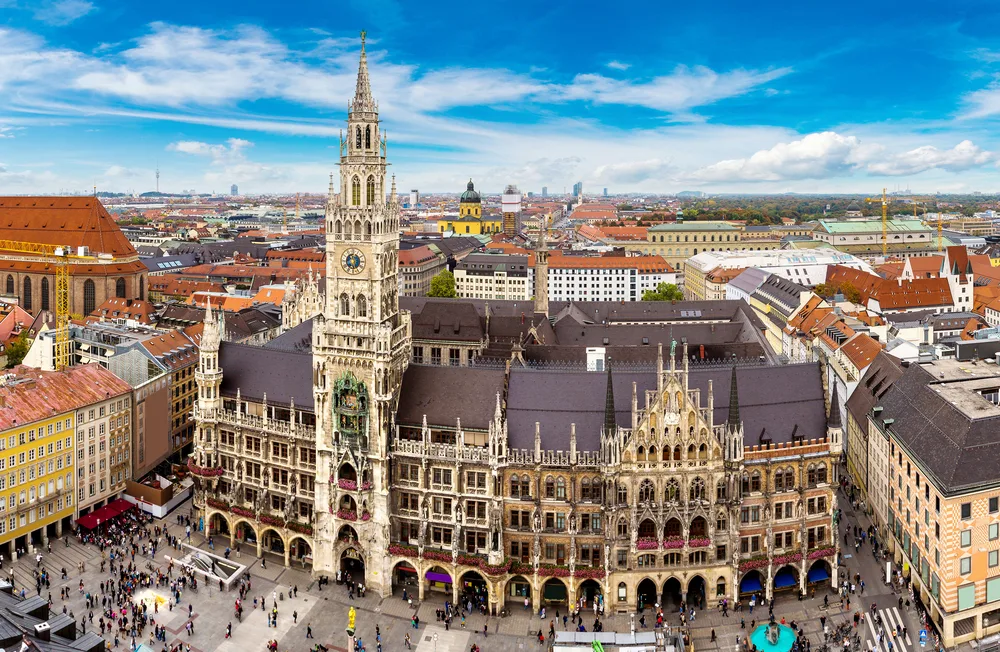
Munich
Arriving in Munich, you would be forgiven for thinking you were on the set of a movie about old Bavaria. At the Old Town beer halls, barmaids laced in dirndl dresses serve up frosty Helles lager, as oom-pah music drifts across the Marienplatz square. Men in lederhosen and checked shirts merrily give toasts as they knock glasses, or steins, as they’re known here. They sit at tables laden with wurst sausage and giant pretzels oozing with herby butter. This is Germany’s Germany, a place where folk traditions never stopped, and the revelry doesn’t either. Even when it isn’t Oktoberfest, the town’s notorious beer-drinking celebration, Munich is always happy to show you a good time. Simply cast your eyes around the lavish, gilded banquet hall at the Munich Residenz, the 13th-century Wittelsbach palace. You’ll see Munich has been impressing guests for centuries. Or, swing by the BMW Museum and check out the classic German cars. They even let you sit inside to test out the new models. At the city’s English Gardens, surfers ride waves on one of the park’s rivers. Munich is filled to the brim with this kind of pure-hearted German fun.
Read More
Learn About Munich
Build Munich Trip

Prague
The city of Prague is indisputably the gem of Central Europe. Full of history, culture, and classic Czech pubs around every corner, Prague is teeming with nooks and crannies just waiting to be discovered. The narrow cobblestone streets and warm red rooftops give the city a homey feel, while the well-preserved medieval architecture transports you back in time. Walking across the Charles Bridge with the view of the Prague Castle will make you feel like you’re living in a fairytale, and you might as well be. As an up-and-coming destination, Prague is a perfect mix of classic and modern. New trendy cafes and bistros are always popping up, and you can always find a group of lively locals chowing down on goulash and quaffing pivo (the best beer in Europe!) at traditional Czech restaurants across the city. The clash of modernity and tradition, preservation and innovation, gives this city a mysterious air that you won’t soon forget.
Read More
Learn About Prague
Build Prague Trip

Vienna
Artistic and musical, historical and elegant, Vienna is the definition of class. The seat of the Habsburg monarchy for over six centuries, it's no wonder this city is still fit for royalty. Baroque buildings and imperial palaces dominate the cityscape, while locals stride gracefully through the streets, likely on their way to a classical music concert or art exhibition. Visitors from all over the world flock to Schonbrunn Palace, historical museums, and local eateries for authentic Viennese schnitzel. Vienna is also home to world-class wining and dining. Famous dishes include Wiener schnitzel, Tafelspitz (prime boiled beef), and apfelstrudel (apple strudel), all of which pair well with a glass of fine Austrian wine. No matter how long you spend in Vienna, you'll leave with a new appreciation for the finer things in life.
Read More
Learn About Vienna
Build Vienna Trip

Budapest
Situated at the heart of Europe, Budapest is the capital of Hungary, appropriately named 'The Pearl of the Danube,' for its fixating and almost haunting beauty. Formerly two separate cities, Buda and Pest were forged into one by time, occupation, and the eight bridges that anchor them together today. From the Romans to the Communists, each occupier left its flavor profile in Budapest, evident in the famous spicy Hungarian stew known as 'goulash.' Budapest is a melting pot of history, culture, and taste, from the magnificent Baroque and neo-Gothic architecture to the Turkish thermal baths. After a long day of sightseeing, treat yourself to a glass of Tokaj, what King Louis XIV of France referred to as the "Wine of Kings, King of Wines". Budapest has a flavor to satisfy any taste.
Read More
Learn About Budapest
Build Budapest Trip

Salzburg
You've probably heard this before— the city of Salzburg is straight out of a fairytale. Nestled in the mountains, this romantic city's Baroque architecture with colorful domes and spires is especially striking against the ancient fortress and Austrian Alpine backdrop. If you're looking for an amazing view, climb up to Hohensalzburg Fortress, Central Europe's largest intact fortress, for a jaw-dropping panorama of the city backed by misty mountains. Perhaps most famous for being the birthplace of the renowned composer Wolfgang Amadeus Mozart and the filming location for the classic The Sound of Music, this city has much to offer. Salzburg has become an important artistic and cultural center, featuring magnificent concert halls that uphold the city's tradition of classical music every day of the year, as well as acclaimed art exhibitions and museums. If you do it right, your visit to Salzburg will immerse you in the city's unforgettable atmosphere and keep you coming back for more.
Read More
Learn About Salzburg
Build Salzburg Trip

Nuremberg
One of the most authentic, storied German destinations, Nuremberg's picturesque old town, glorious castle, and buzzing Christmas Market makes this city a time-true classic. The ideal gateway to old Bavaria, Nuremberg offers a primer in German history before you embark on the lovely journey through old Bavaria, known as the Romantic Road. Considered the capital of the Holy Roman Empire in the middle ages, Nuremberg would have felt like the center of the world as a procession of kings and emperors passed through its magnificent gates. When the German Renaissance came, Nuremberg was at its heart. Albrecht Dürer, the great German master artist, was born here, and Martin Luther called Nuremberg Germany's 'eyes and ears'. Skip forward a few centuries, and the city took a dark turn, as Nuremberg became a gathering point for the German National Socialists. Slightly outside of town, you can still find the Nazi Party Rallying Grounds, a sobering reminder of the not so distant past. If it all gets too heavy, you can end the day with a glass of rotbier (red beer) and mull it over. Nuremberg is a must-see for anyone who wants to delve into Germany's past.
Read More
Learn About Nuremberg
Build Nuremberg Trip

Munich
Arriving in Munich, you would be forgiven for thinking you were on the set of a movie about old Bavaria. At the Old Town beer halls, barmaids laced in dirndl dresses serve up frosty Helles lager, as oom-pah music drifts across the Marienplatz square. Men in lederhosen and checked shirts merrily give toasts as they knock glasses, or steins, as they’re known here. They sit at tables laden with wurst sausage and giant pretzels oozing with herby butter. This is Germany’s Germany, a place where folk traditions never stopped, and the revelry doesn’t either. Even when it isn’t Oktoberfest, the town’s notorious beer-drinking celebration, Munich is always happy to show you a good time. Simply cast your eyes around the lavish, gilded banquet hall at the Munich Residenz, the 13th-century Wittelsbach palace. You’ll see Munich has been impressing guests for centuries. Or, swing by the BMW Museum and check out the classic German cars. They even let you sit inside to test out the new models. At the city’s English Gardens, surfers ride waves on one of the park’s rivers. Munich is filled to the brim with this kind of pure-hearted German fun.
Read More
Learn About Munich
Build Munich Trip

Prague
The city of Prague is indisputably the gem of Central Europe. Full of history, culture, and classic Czech pubs around every corner, Prague is teeming with nooks and crannies just waiting to be discovered. The narrow cobblestone streets and warm red rooftops give the city a homey feel, while the well-preserved medieval architecture transports you back in time. Walking across the Charles Bridge with the view of the Prague Castle will make you feel like you’re living in a fairytale, and you might as well be. As an up-and-coming destination, Prague is a perfect mix of classic and modern. New trendy cafes and bistros are always popping up, and you can always find a group of lively locals chowing down on goulash and quaffing pivo (the best beer in Europe!) at traditional Czech restaurants across the city. The clash of modernity and tradition, preservation and innovation, gives this city a mysterious air that you won’t soon forget.
Read More
Learn About Prague
Build Prague Trip

Vienna
Artistic and musical, historical and elegant, Vienna is the definition of class. The seat of the Habsburg monarchy for over six centuries, it's no wonder this city is still fit for royalty. Baroque buildings and imperial palaces dominate the cityscape, while locals stride gracefully through the streets, likely on their way to a classical music concert or art exhibition. Visitors from all over the world flock to Schonbrunn Palace, historical museums, and local eateries for authentic Viennese schnitzel. Vienna is also home to world-class wining and dining. Famous dishes include Wiener schnitzel, Tafelspitz (prime boiled beef), and apfelstrudel (apple strudel), all of which pair well with a glass of fine Austrian wine. No matter how long you spend in Vienna, you'll leave with a new appreciation for the finer things in life.
Read More
Learn About Vienna
Build Vienna Trip
prev
next


 Map of Your Itinerary Route
Map of Your Itinerary Route
Zoom In to the cities to see your itinerary in more detail


 4.8
4.8 







